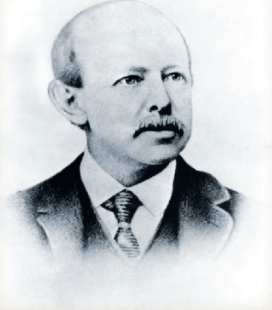Horatio Alger
Horatio Alger was one of the most successful writers in United States history. In the early 1900s, his books were in almost every home. Alger wrote more than 400 novels and more than 500 stories. How was this possible for one man? He always wrote the same story! In a Horatio Alger story, details change, but the story and the protagonist stays the same. In all of his books, there is always a poor teenage boy as a protagonist: the main character. The boy always works hard and finds success at the end of the story. The boy usually has no parents or family or his parents are very poor. He can’t or he doesn’t go to school, but he is smart and wants to learn. He is not only hardworking, but also honest and kind. Besides this, he always helps other people. His honesty and bravery are the other significant characteristics of this poor boy. He has a positive attitude and believes in himself so he wants to succeed and he is not afraid to try new things. The protagonist goes to a city. He works very hard and makes a little money. He tries to improve his life. For example, he learns to read. He meets a rich man, and this man helps him. Then he has some luck. With this luck, his hard work, and the rich man, he gets a job and becomes successful. The books were criticised because the success of the young main character often depends on a rich man who helps the young boy. For example, sometimes the boy finds a large sum of money and returns it to its owner. The owner of the money then decides to help the boy succeed. Many people liked Horatio Alger’s stories because they were very similar to real life in America in those days. In the early 1900s, immigrants and many other people went to cities for work. Life was very hard in big cities. It was difficult to find a job and many families were poor. Often, even young children worked. Like the boys in the stories, these people also wanted success. Alger wanted to give them hope with this message: in the United States poor people can succeed. Horatio Alger’s message is still a main idea in U.S. culture today. This message is now part of the culture and language.

